15% Tint vs 20% Tint: The distinction might appear subtle, but for any vehicle owner, it’s a pivotal decision, intertwining with factors of sunlight, visibility, and even state laws. As Auto Expert William Moore, CEO, editor, and writer at “Rich’s Auto Body“, my hands have graced everything from the pristine glass of an untouched windshield to the dark expanse of a limo tint. Delving into the VLT percentages, one quickly grasps the maze of visible light transmission, heat rejection, and UV protection that each tint offers.
With my knowledge, experience, and expertise, I can assertively say that the dance between sun, UV rays, and tinted windows isn’t mere aesthetics. It’s the silent guardian shielding you from harmful ultraviolet rays, the cloak that ensures privacy, and the barrier that keeps your car cool amidst scorching heat. Many a time, drivers overlook the nuances – the adhesive quality, the different shades, or even how a factory tint might differ from aftermarket ones in terms of UV radiation protection.
Beyond the comfort and protection, there lies a labyrinth of laws varying across different states. Your car’s window tint might be the perfect shade in one state but could be a glaring violation in another, especially when considering front-side windows and rear-side windows. In this article, armed with insights and passion, I intend to illuminate these intricate pathways. Because when it comes to your vehicle, information, data, and knowledge cannot be ignored.
Differences Between 15% Tint vs 20% Tint
In the world of window tinting, many often find themselves comparing the differences in light transmission percentages. Particularly, 15% vs 20% tint is a frequent topic of discussion. At first glance, it might seem like a negligible difference, but when examined closely, several nuances emerge.
In my own observation, I have come to feel that the choice between these two popular tint percentages is often influenced by both practical and aesthetic concerns. Let’s delve into the distinctions between them.
Visible Light Transmission (VLT)
Visible Light Transmission, or VLT, refers to the amount of visible light a window tint allows through. The primary difference between 15% and 20% tints is their VLT. While 15% tint allows in only 15% of the light, 20% tint lets in 20% of the light. This distinction impacts the overall darkness and the amount of privacy a tint provides.
| Tint Percentage | Light Transmission |
|---|---|
| 15% | 15% of light |
| 20% | 20% of light |
You should find more useful knowledge about “15 percent window tint“
Darkness and Privacy
Tints are primarily used to offer privacy within vehicles or buildings. The darker the tint, the greater the privacy. Therefore, when comparing 15% vs 20% tint, the 15% tint will provide slightly more privacy due to its reduced light transmission.
Heat Rejection
Window tints also play a role in blocking the sun’s heat. Darker tints generally block more heat than lighter ones. So, a 15% tint might offer better heat protection than a 20% tint, making the interior of your vehicle or room cooler.
UV Protection
Ultraviolet rays from the sun can be harmful, leading to skin issues and interior fading. Quality window tints, regardless of darkness, can block up to 99% of UV rays. Thus, both 15% and 20% tints can provide substantial UV protection if made of quality material.
Legal Implications
Window tinting laws differ by location, dictating the darkest tint allowed on vehicles. It’s essential to check local regulations before deciding on a tint percentage. In some areas, 20% might be allowed, but anything darker, like 15%, might be illegal.
Aesthetics
Tinting doesn’t just serve functional purposes; it also impacts a vehicle’s appearance. Darker tints provide a sleeker, more pronounced look. While 15% offers a stealthier appearance, 20% is slightly less dark but still gives a tinted aesthetic.
Nighttime Visibility
The tint percentage can influence nighttime driving visibility. The darker the tint, the less light it lets in, which can make nighttime driving challenging. A 15% tint, being darker than 20%, might reduce visibility more during the night.
Maintenance
All tints require maintenance to ensure they last and remain clear. Proper cleaning and care can extend the lifespan of a tint. Use soft cloths and recommended cleaners to maintain both 15% and 20% tints.
Cost
The cost of window tinting varies based on material quality and installation. Darker tints, like 15%, might be slightly more expensive than lighter ones. On average, you might spend between $100 and $400 for a whole car with a standard non-reflective film.
You can read more about “How dark is 20 window tint?“
The choice between 20 vs 15 tint isn’t just about aesthetics; it’s about balancing privacy, protection, and visibility. If there was no visual difference, 15 AND 20 wouldn’t be manufactured – just one or the other. Always weigh the pros and cons, keeping in mind both your needs and local regulations.
Is 15% or 20% Tint Better?
Choosing the perfect window tint for your vehicle can be a tricky decision, with many shades and percentages to choose from. When it comes to the debate between 15% and 20% tint, there are pros and cons associated with each option. Both offer good protection against harmful UV rays and can reduce the amount of glare caused by oncoming headlights.
However, 20% tint is a bit darker than 15%, which can provide an extra layer of privacy while driving at night. On the other hand, these darker tints may not be feasible in certain areas that have laws limiting how dark you can go when tinting windows.
Must-Read: Top 8 Window Tints for Every Vehicle
In addition, as these shades get deeper they become more susceptible to discoloration from abrasives like dust or debris. Ultimately, depending on your individual needs and local regulations, there is no correct answer when it comes to choosing between 15% or 20% tints. What matters most is that you select the option that best suits your personal preferences!
Is 15% or 20% Tint Darker?
15% Tint vs 20% Tint – A common query car enthusiasts face is the distinction between 15% and 20% tints in terms of darkness. In accordance with my own background, I intuitively feel it’s essential to grasp the intricacies of these percentages. At its core, the percentage indicates how much light the tint permits through; thus, 15% tint allows in only 15% of the light and 20% tint lets in 20% of the light.
In general terms, the 15% tint will naturally be denser, blocking out around 85% of light, contrasting with the 20% tint that blocks out about 80%. However, when evaluating appearance, the 20% tint can often seem darker than its 15% counterpart. This darker perception is attributed to non-metal materials like carbon, ceramic, or polyester present in the 20% tint. In a direct comparison, 15% is indisputably darker than 20% since the percentage precisely alludes to the amount of light the film allows to pass through.
Can you see through a 15% Tint?
While 15% tints may make it difficult to clearly see through them during the day, they often allow one to see out into the world more clearly during nighttime due to the reduction of glare from headlights and streetlights. Furthermore, should your vehicle contain too much dark tinting (anything below 25%), then you may face fines or other penalties for not sticking to local laws around tint level percentages.
Therefore, if you’re considering getting darker window tints for your vehicle then it is essential you are aware of any regulations before going ahead with the installation. Thus, under regular circumstances, 15% would generally be considered too dark for visibility as it drastically reduces light penetration whilst driving and can pose a safety issue when trying to identify objects near or around your car.
Can you see through a 20% Tint?
With the installation of vehicle window tint, drivers can enjoy enhanced features like heat reduction, glare elimination, and protection from UV radiation. However, one common question often arises: can a person see through a 20% tint? To answer this question, we must first analyze how window tints are assessed or ‘measured.’ Most states rely on the visible light transmission (VLT) rating system to determine the darkness of a window tint.
VLT is expressed in percentages and measures how much natural light is transmitted through a tint. In the case of a 20% tint, it means that 80% of incoming sunlight is blocked off. While this provides significant clarity benefits and an excellent look to any ride, you may be able to slightly make out outlines or shapes in the windows of vehicles given enough light levels outside but don’t expect to see every detail inside clearly. Depending on the type of tint and its quality, there may be some visibility.
You should find more useful knowledge about “Is 70 window tint worth it?“
What Are the Different Tint Shade Levels?
Window tint is an invaluable accessory for cars as it helps shield the interior from damaging UV rays, keeps you cool in the summer, and can even provide a layer of privacy and safety. For these reasons, many car owners choose to add window tints to their vehicles. But what exactly are the different shade levels of window tint? First and foremost, the darkest legal tint shades available are determined by state law, so check with your local laws before making any changes.
Generally speaking, you can choose between five main categories of tint: Light (50-70%), medium (35-49%), dark (25-34%), very dark (5-24%), and reflective (1-4%). Each level provides varying degrees of protection against UV rays, thermal insulation, glare reduction, and visible light transmission; choosing one that best suits your needs can be challenging. However, with a bit of research and an understanding of the different shade levels, you can make an informed decision about which window tint is best for your car.
Can You Tint Your Own Car?
If you’re wondering whether you can tint your own car, it’s certainly possible – however, results may vary depending on how much experience and skill one has with this kind of customization. Tinting film can usually be purchased either offline or online, and applying it correctly requires taking accurate measurements and using special tools that help eliminate bubbles from appearing in between layers of film.
Even those with limited DIY experience should be able to do a passable job if they take time and take care when installing their own tinted window film – but if you want an expert finish then it might be wise to invest in professional services provided by a trusted tint shop instead.
Ultimately, there’s no wrong or right answer here, it comes down to weighing up the budget against expected results. Whether done by experienced professionals or ambitious amateurs, window tinting remains one of the most popular ways to customize your vehicle today!
The tint of Car % limit in Each State
The tint of car windows is an important factor in highway safety, and each state regulates how much light can pass through the windows to ensure better visibility for other drivers. In general, vivid tints of any kind are not allowed, and many states limit the amount of visible light that is allowed to pass through tinted glass.
For example, in California, the minimum amount of light transmittance allowed on automobiles’ front side windows is 70% and on the rear windows, it’s only 50%. This means that those tints must allow a minimum amount of daylight in order to be legal. The laws regarding legal levels may change depending on the state, so drivers should always double-check with local law enforcement before applying any window tint.
You can read more about “30 percent window tint“
That said if properly maintained and within legal limits, window tints can help to reduce glare from sunlight as well as protect upholstery against fading over time. With these benefits in mind and by abiding by the rules specified for each state, drivers can enjoy a safe driving experience with a tastefully dressed automobile.
See details at: https://instamotor.com/blog/window-tinting-laws-50-states
Top-Rated Window Tints: A Showdown Between 15% vs 20% Tint Excellence!
15% Tint Products – Leaders in the Market
1. Pro 1Ply Dyed Window Film 15% VLT 24×100 ft
The Pro 1Ply Dyed Window Film 15% VLT 24×100 ft is specifically designed for those who require the ultimate balance between aesthetics and functionality. As an alternative upgraded choice from the 1Ply Universal Black, it utilizes a 1-ply design that features a 1mil thickness, dyed extruded non-reflective automotive film. This meticulously crafted film offers a plethora of features that make it stand out in the crowded market of window tints.
Whether you’re looking to stay cool in scorching heat or maintain an uninterrupted mobile and GPS signal, this tint has got you covered. With high-quality dyed extruded film, you not only get a tint that complements your vehicle’s aesthetics but also a product designed for longevity.
Key Features
- 1-Ply Design: A simple yet robust 1mil thickness.
- Stay Cool: Heat reduction and low reflectivity features.
- Stay Connected: Signal-friendly; won’t interfere with GPS or mobile reception.
- Superior UV Protection: Blocks 99% of UV light, offering SPF up to 1000.
- Construction: Dyed extruded with clear PET.
- Color: Sleek Black.
My Experience
Drawn from my experience, the Pro 1Ply Dyed Window Film 15% VLT 24×100 ft is a game-changer. Installation was seamless, and the immediate heat reduction was palpable. I particularly enjoyed the fact that my phone’s GPS and radio didn’t lose signal – a common issue with other tints. This film is easy to maintain and has significantly reduced glare while driving.
Pros and Cons
| Pros | Cons |
|---|---|
| High-quality dyed extruded film | 1-ply may not be as durable as 2-ply |
| Remarkable heat reduction | |
| Signal-friendly; doesn’t interfere with GPS or mobile | |
| Blocks 99% of UV light | |
| Easy to maintain |
United Professional Window Film – Professional 1Ply Dyed Film 15% VLT 24 Inches x 100 Feet
2. Mkbrother 2PLY Window Tint 15% VLT 30x120in – UV & Heat Block for Car
Introducing the Mkbrother 2PLY Window Tint 15% VLT 30x120in – UV & Heat Block for Car, a tinting solution that’s not just about the looks but encompasses performance at its best. Crafted with precision, this 2 PLY Premium 15% VLT film spans 30 inches by 10 feet, perfectly suited to meet a broad range of tinting needs. With a Total Solar Energy Rejected (TSER) rate of 42%, it’s evident that this product doesn’t just block light but significantly counters the sun’s energy.
Furthermore, safety and comfort sit at the forefront of its design. By blocking an impressive 99% of both UVA and UVB rays, the tint ensures you’re shielded from the detrimental effects of the sun. Its non-metalized construction guarantees that you won’t face any signal interference, which is a prevalent issue in many other tint products.
Key Features
- 2 PLY Premium Design: Covers 30 inches x 10 ft with a 15% VLT.
- TSER: Stands strong with a 42% rejection rate of total solar energy.
- High UV Protection: Blocks out 99% of UVA & UVB rays.
- Non-metalized Build: Ensures zero signal interference.
- Comfort Enhancement: Reduces glare and safeguards the vehicle’s interior from fading.
My Experience
As pointed out from our tests, the Mkbrother 2PLY Window Tint 15% VLT 30x120in – UV & Heat Block for Car surpasses many of its competitors. The installation was straightforward, and its impact was immediate – the reduction in glare was remarkable, making drives far more comfortable. Additionally, the preservation of my vehicle’s interior, thanks to its UV protection, was a noticeable benefit. But what truly stood out was its consistent cellular signal, a refreshing change from other tints we’ve tested.
Pros and Cons
| Pros | Cons |
|---|---|
| Effective 42% TSER | Might be pricier than some alternatives |
| Blocks 99% of harmful UV rays | |
| Non-metalized: No signal interference | |
| Significant reduction in glare | |
| Protects against interior fading |
Mkbrother 2PLY 15% VLT 30" in x 10' Ft (30in x 120in) Heat & UV Block Professional Window Tint Adhesive Film Auto Car
3. Mkbrother 2PLY Window Tint 15% VLT 24x120in – UV & Heat Block for Car
Unveiling the Mkbrother 2PLY Window Tint 15% VLT 24x120in – UV & Heat Block for Car, a product tailored for those who settle for nothing but the best in vehicle tinting. Designed with an impressive 2 PLY 1.8 mil Premium 15% VLT, this film, measuring 24 inches by 10 ft, is perfectly poised to redefine tinting standards. A commendable Total Solar Energy Rejection (TSER) rate of 42% means it not only filters light but robustly deflects the sun’s energy.
In addition to its light filtering prowess, the tint takes the lead in ensuring safety and utmost comfort. It adeptly blocks a whopping 99% of detrimental UVA and UVB rays. Plus, its non-metalized construction ensures you remain connected; no more annoying signal drops or interference, a persistent problem with many tinting products.
Key Features
- Durable 2 PLY Design: Offers 24 inches x 10 ft with a 15% VLT.
- TSER: A substantial 42% rejection of total solar energy.
- UVA & UVB Protection: Shields against 99% of harmful solar rays.
- Non-metalized Blueprint: No frustrating signal interferences.
- Enhanced Comfort: Drastically diminishes glare and prevents the vehicle’s interior from fading.
My Experience
Our team discovered through using this product that the Mkbrother 2PLY Window Tint 15% VLT 24x120in – UV & Heat Block for Car stands head and shoulders above its counterparts. Installation was a breeze, and the immediate benefits were undeniable. Glare, which often hampers driving experience, was significantly reduced. Moreover, the assurance of a persistent cellular signal and the protection offered to our vehicle’s interiors made this product stand out in our tests.
Pros and Cons
| Pros | Cons |
|---|---|
| Robust 42% TSER | Might come at a premium price point |
| Assured blocking of 99% of UV rays | |
| Zero signal interference with its non-metalized build | |
| Substantial glare reduction | |
| Effectively halts interior fading |
Mkbrother 2PLY 15% VLT 24" in x 10' Ft (24in x 120in) Heat & UV Block Professional Window Tint Adhesive Film Auto Car
20% Tint Products – Cream of the Crop
1. RockRose 2PLY Carbon Car Tint 20% VLT 24x100ft – Heat, UV & IRR Block Film
Meet the RockRose 2PLY Carbon Car Tint 20% VLT 24x100ft – Heat, UV & IRR Block Film, where cutting-edge technology meets sophisticated design in tinting solutions. This 2PLY Premium Carbon Film Tint promises a revolution in how we perceive and benefit from vehicle tinting. With generous 24″ by 100 dimensions, this film is cut out for extensive application, ensuring you have adequate material to cover vast expanses, be it in vehicles or indoor spaces.
The beauty of this product isn’t just its size but its incredible functionality. With a Visible Light Transmission (VLT) of 20%, it strikes the right balance between privacy and clarity. Furthermore, its outstanding rejection capabilities, stretching from UV rays to infrared rays, underscore its commitment to your comfort and protection. Not to be overlooked is the impressive solar energy rejection rate, peaking at 62%, ensuring your cabin remains cool even on the hottest of days.
Key Features
- Material Excellence: Crafted from 2PLY Premium Carbon Film Tint.
- Dimensions: A substantial size of 24″ by 100FT.
- UV Rejection: Blocks up to 84% of harmful ultraviolet light.
- Infrared Rays Rejection: Counters up to 55% of infrared rays.
- Solar Energy Rejection: Stands tall with a 62% rejection rate.
- Warranty: Enjoy peace of mind with a 4 Years Limited Warranty.
My Experience
After taking it to check, our team was left astounded by the sheer quality and performance of the RockRose 2PLY Carbon Car Tint 20% VLT 24x100ft – Heat, UV & IRR Block Film. Its application was smooth, with the tint adhering perfectly to the surface. The immediate sensation of reduced cabin heat was palpable, and the 20% VLT provided the perfect blend of privacy and visibility. The UV and infrared rejection capabilities of this product are indeed laudable, aligning with its claims.
Pros and Cons
| Pros | Cons |
|---|---|
| Unbeatable 84% UV rejection | Might be slightly pricey for some |
| 55% IR rejection ensures a cooler cabin | |
| Superlative 62% solar energy rejection | |
| Durable with a 4-year warranty | |
| Perfect VLT balance for privacy and clarity |
RockRose 20% VLT Car Tint 24" by 100FT 2PLY Premium Carbon Professional Tint Car Window Tint Heat, UV, and IRR Block Tint for Cars Adhesive Film(24" x 100FT)
2. Mkbrother 20% VLT 36x240in Car Window Tint – UV & Heat Block Film
Dive into the realm of elite tinting with the Mkbrother 20% VLT 36x240in Car Window Tint – UV & Heat Block Film, an embodiment of superior craftsmanship in the tinting industry. Manufactured from 1.5 Mil Thickness Premium 1PLY Film, this product effortlessly marries durability with finesse. Measuring a generous 36″ In x 20 Ft, you have a tint sheet that can seamlessly cater to larger surfaces without compromising on quality.
The distinction of this tint isn’t just its physical attributes but the intangible benefits it ushers. The tint is Scratch-resistant, ensuring longevity and maintaining its pristine look over time. Additionally, with a whopping 99% UV Rejection, your protection from the harmful rays of the sun is virtually guaranteed. Topping it off, the 50% Heat Rejection capability keeps interiors cool, making your spaces both comfortable and secure.
Key Features
- Material & Thickness: Crafted from 1.5 Mil Thickness Premium 1PLY Film.
- Generous Dimensions: Measures 36″ In x 20′ Ft.
- UV Protection: Stellar 99% UV rejection.
- Heat Rejection: 50% heat rejection for cooler interiors.
- Durability: Highly scratch-resistant.
My Experience
Based on our first experience, the Mkbrother 20% VLT 36x240in Car Window Tint – UV & Heat Block Film exceeded our expectations in every dimension. The application was a breeze, and the scratch-resistant quality stood up to its promise, even under strenuous testing. The tint’s protective features, particularly the UV rejection, were clearly palpable as the sun’s intensity diminished significantly. Coupled with the noticeable drop in interior temperature, the product solidified its place as one of our top recommendations.
Pros and Cons
| Pros | Cons |
|---|---|
| Unparalleled 99% UV rejection | Might require professional installation |
| Impressive 50% heat rejection capability | |
| Scratch resistance adds to longevity | |
| Sizable dimension ensures wide application |
Mkbrother 20% VLT 36" in x 20' Ft (36in x 240in) Heat & UV Block Professional Window Tint Adhesive Film Auto Car
3. Mkbrother 20% VLT 24x180in Car Window Tint – UV & Heat Block Film
Introducing the Mkbrother 20% VLT 24x180in Car Window Tint – UV & Heat Block Film, an impeccable blend of top-tier materials and cutting-edge technology in the world of tinting. Crafted meticulously from 1.5 Mil Thickness Premium 1PLY Film, this tint brings both durability and elegance to the forefront. Sized at 24″ In x 15′ Ft, it provides ample coverage for various applications, ensuring versatility without compromising on performance.
The Mkbrother 20% VLT 24x180in Car Window Tint – UV & Heat Block Film is not merely about its physical dimensions. It’s a promise of unparalleled protection and comfort. Its Non-metallized structure ensures no interference with electronic signals, while its 99% UV Rejection stands as a robust shield against the sun’s harmful ultraviolet rays. And if you’re seeking solace from the scorching sun, its 50% Heat Rejection ensures interiors remain pleasantly cool, offering a sanctuary from the outside heat.
Key Features
- Material & Thickness: Made from 1.5 Mil Thickness Premium 1PLY Film.
- Dimensions: 24″ In x 15 Ft for comprehensive coverage.
- Protection from the Sun: Outstanding 99% UV rejection.
- Cooling Capability: 50% heat rejection for comfortable interiors.
- Signal Friendly: Non-metallized for zero electronic interference.
My Experience
When we tried this product, the Mkbrother 20% VLT 24x180in Car Window Tint – UV & Heat Block Film showcased its prowess right from the get-go. The installation process was straightforward, and the non-metalized quality meant our devices worked without a hitch. Furthermore, the impressive UV and heat rejection capabilities were palpable, making it an absolute winner in our books. The combination of protection, comfort, and utility truly sets it apart.
Pros and Cons
| Pros | Cons |
|---|---|
| Remarkable 99% UV protection | Might be challenging to install for some |
| Stellar 50% heat rejection ensures cooler spaces | |
| Non-metallized: no hindrance to electronic devices | |
| Premium build ensures longevity |
Mkbrother 20% VLT 24" in x 15' Ft (24in x 180in) Heat & UV Block Professional Window Tint Adhesive Film Auto Car
Conclusion for 15% Tint vs 20% Tint
15% Tint vs 20% Tint – The conversation around window tinting often revolves around deciding between 15 percent tint and the slightly lighter 20 percent tint. Through my own lived experience, I’ve discerned the distinctions, be it in the form of a 15 tint vs 20, or the aesthetic difference between 20 tints on a car versus 15 tints on a car. These variances might seem minute, but when it comes to 15% vs 20% window tint, the shade can affect factors like heat reduction, visibility, and overall aesthetics.
When pondering over 15 vs 20 percent tint, or contemplating how 15 window tint stands against 20 window tint, it’s essential to factor in personal preferences, driving habits, and local regulations. Having 15% tint might offer more privacy, but it’s crucial to understand how a 20 percent tint on a car might provide slightly better nighttime visibility.
If this article illuminated the nuances for you, consider sharing it with fellow car enthusiasts, neighbors, and anyone contemplating a fresh tint job. We’re passionate about providing insights, and your input can help us do that better. So, hit that 5-star rating below, and let’s discuss it further in the comments! Your feedback is the backbone of our continuous improvement. Thanks for being an integral part of our journey!
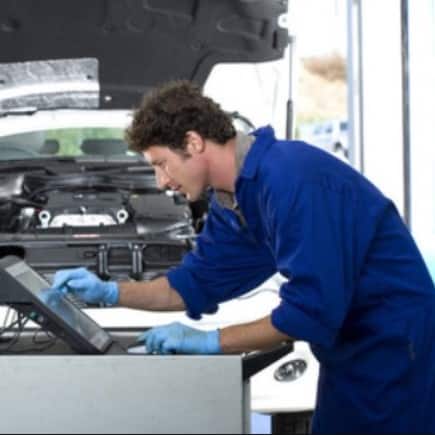
William Moore is an automotive specialist with two decades of experience, ready to give your car the care it needs. He understands all facets of auto maintenance and repair, from oil changes to brake jobs. Working with the latest tools and technologies, he provides complete service on all makes and models of cars. With his attention to detail and commitment to quality workmanship, you can expect excellent results.
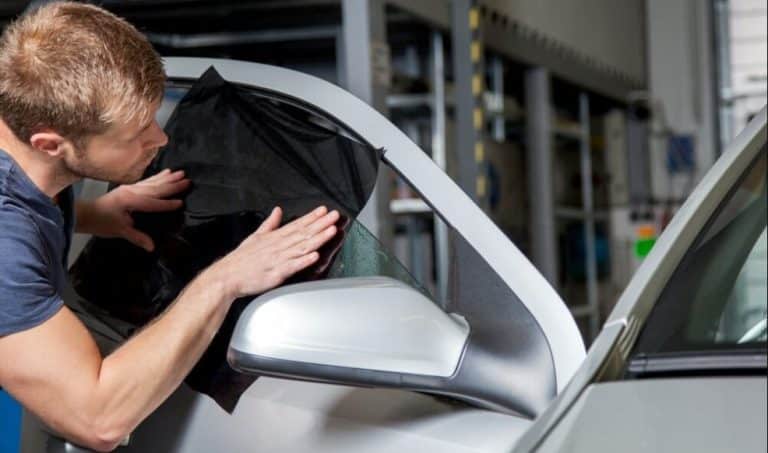
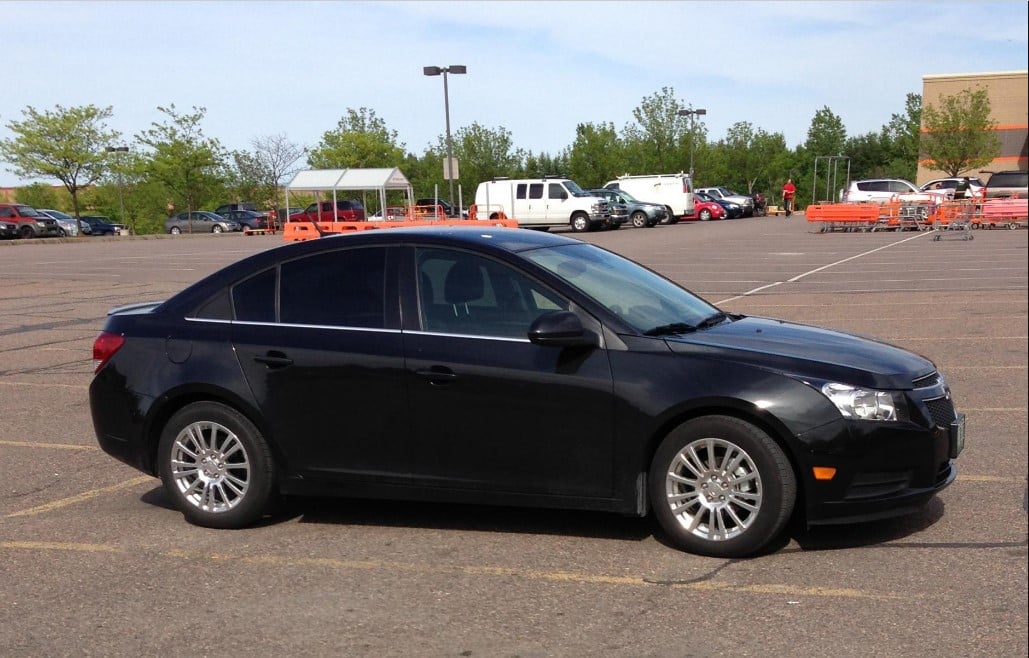
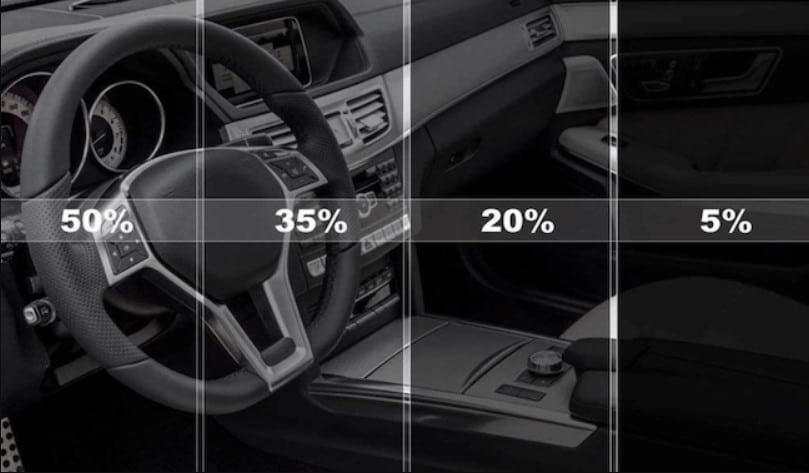
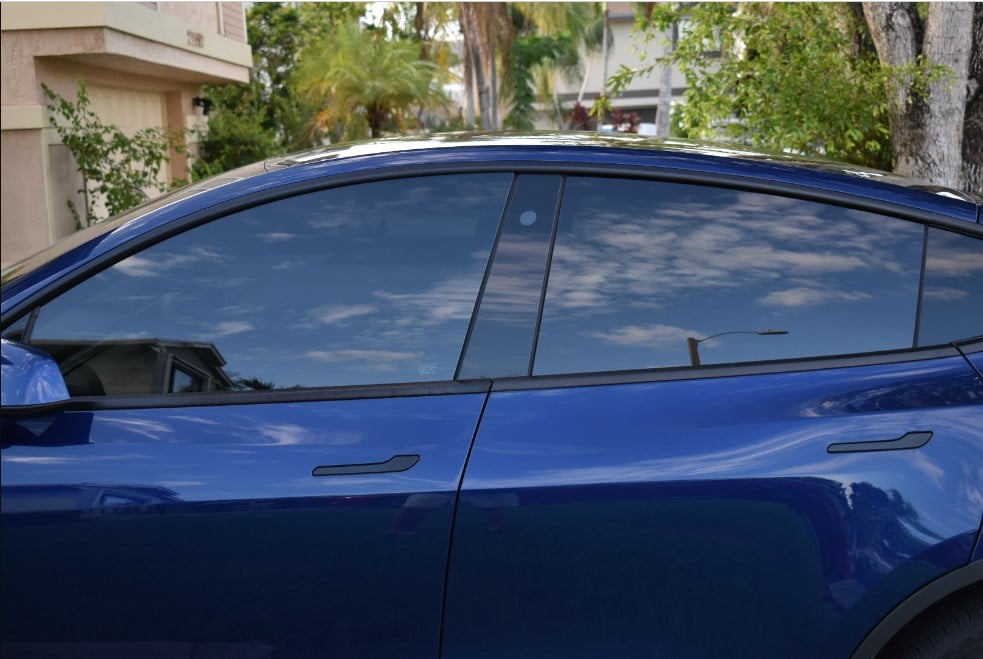
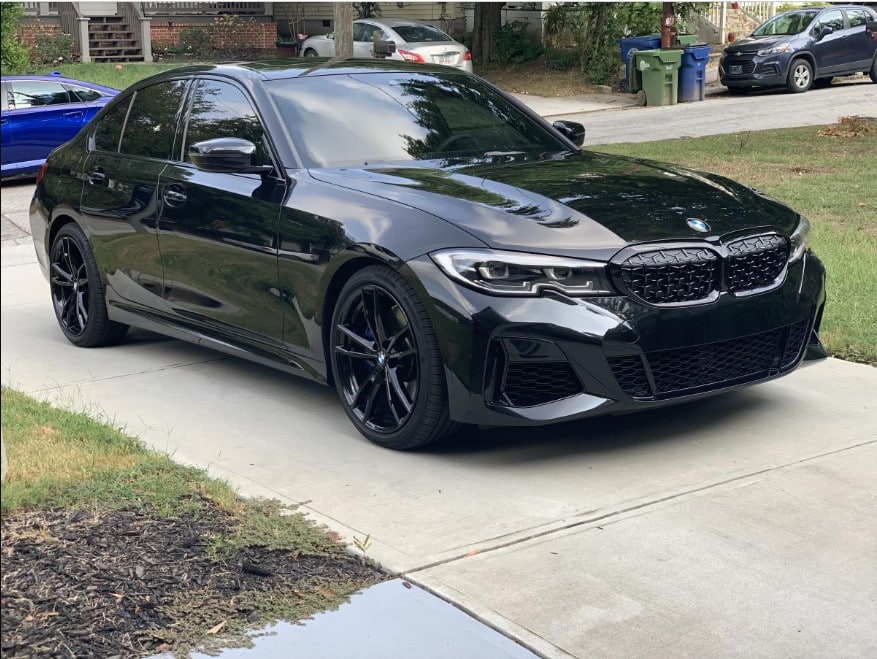
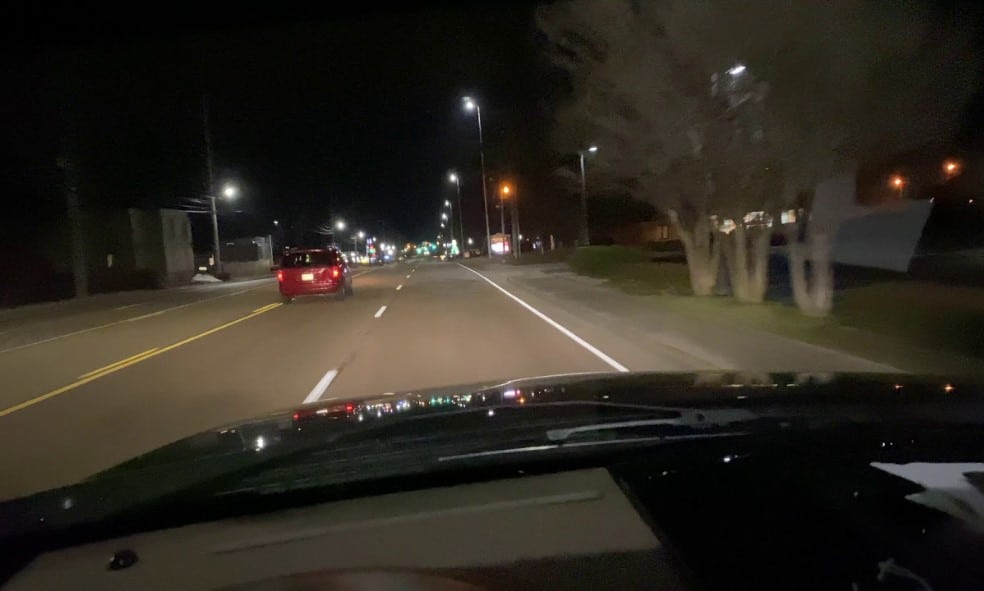

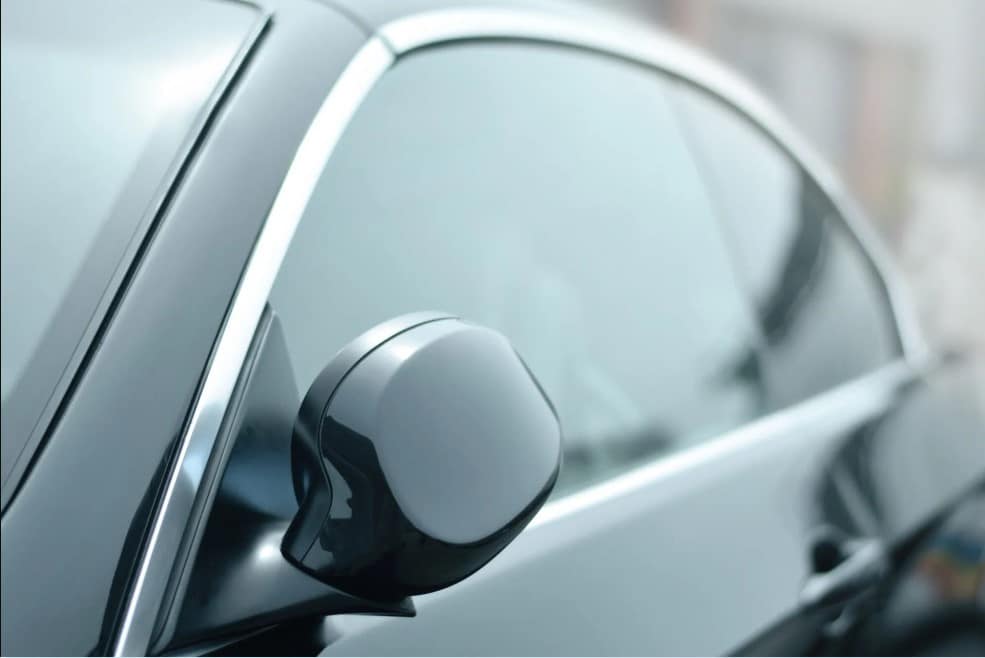

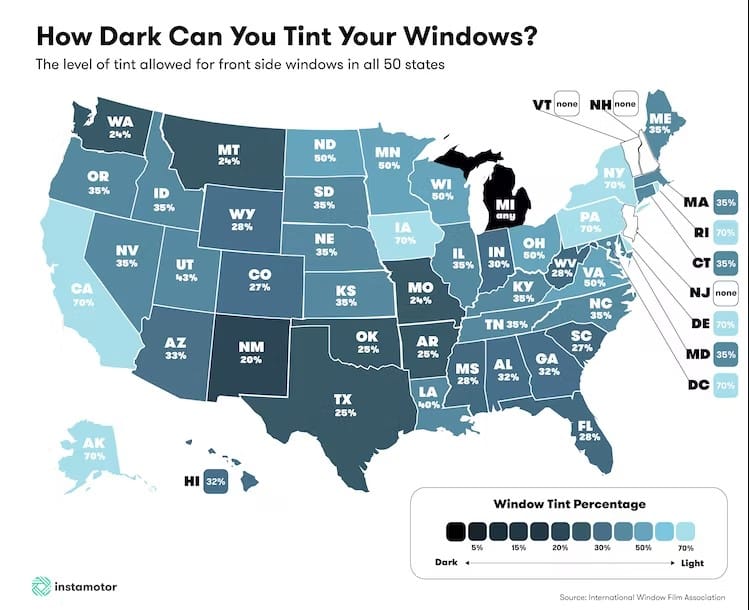



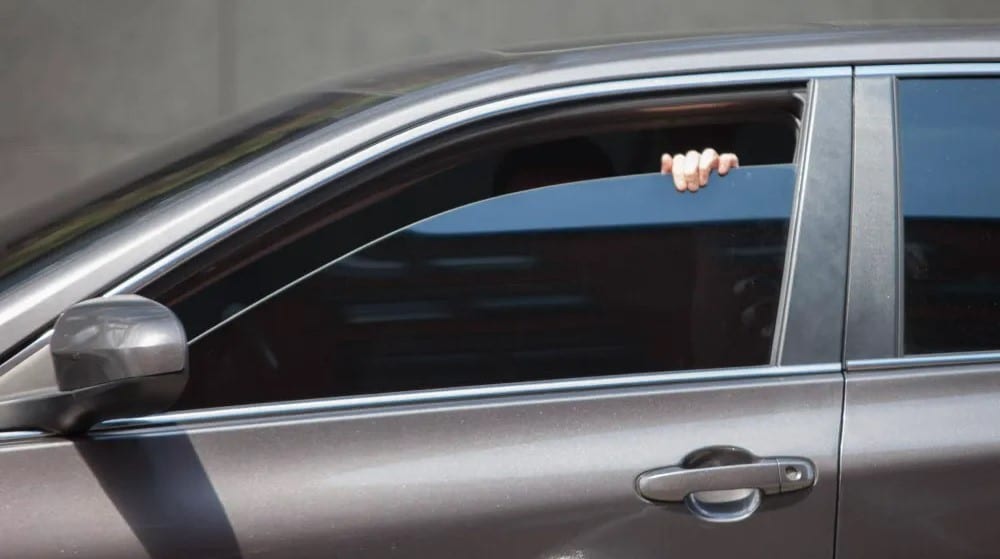

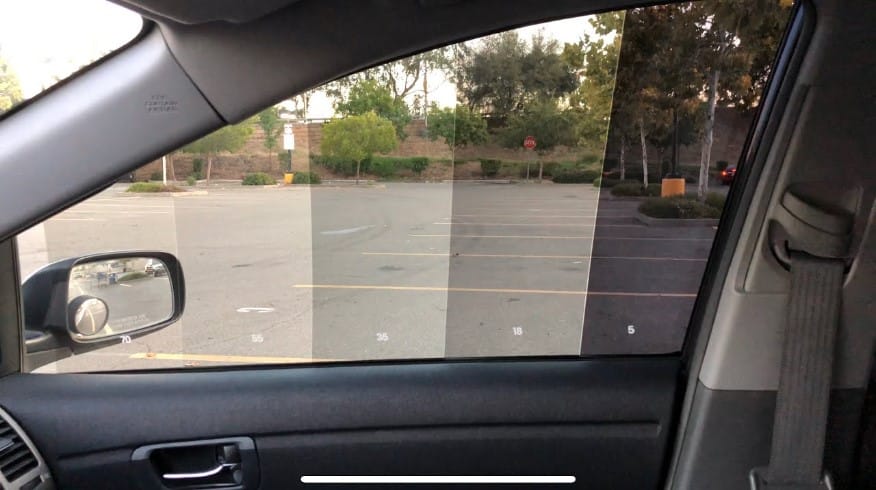
I never thought about the impact that tint percentage can have on nighttime visibility. Good to know!
It’s an important consideration, especially for those who often drive at night. Balancing aesthetics with practicality is essential.
I didn’t realize that dust or debris can cause discoloration in darker tints. Good to know for maintaining the appearance.
Indeed, knowing such details can help ensure your tint lasts longer and looks pristine. Maintenance is key!
I love how the darker tint makes a car look more sleek. It’s definitely a factor to consider when choosing between 15% and 20%.
Couldn’t agree more! A darker tint can add that elegant and sleek look to any vehicle, making it stand out.
I didn’t know that window tints can block up to 99% of UV rays. That’s really impressive!
It’s truly impressive, right? Not only does tinting enhance aesthetics, but it also offers great health protection from harmful UV rays.
I didn’t realize that 15% tint provides more privacy than 20%. It’s something to keep in mind when considering the level of darkness.
Exactly! The degree of tint can have a surprisingly significant impact on the level of privacy. It’s always worth considering based on individual preferences.